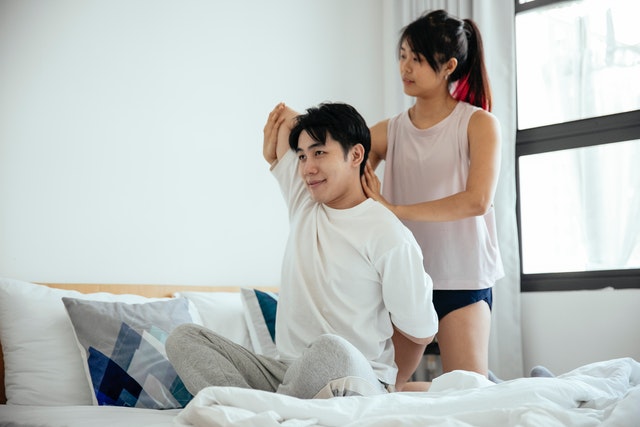Yoga is something you want to share with others you care about, particularly if you like it. That’s a good idea, too. Yoga has been shown to have several health advantages, both physically and mentally. When you do yoga positions with a partner, the advantages are doubled.
Exercise with other people has been shown to improve mental, physical, and emotional well-being and to reduce stress by 26%, according to a research conducted in 2017. People who worked out alone had to work out twice as long as those who worked out in a group since they didn’t see any meaningful results. According to other studies, couples who spend time together doing fun things are happier in their relationships. It is possible to cultivate a sense of intimacy by establishing a regular practise like yoga. The Sexual Wellness Clinic at Loyola University has included yoga into its offerings to assist couples in “building trust, relaxing, and having fun.”
Having a practise partner might help you be more disciplined and focused on your goals. Practicing yoga postures as a pair means you don’t have to tackle it alone in an era when some individuals are still apprehensive about practising yoga in a big group.
Poses for couples yoga practise: 4 helpful hints
Yoga acrobatics come to mind when imagining positions for two individuals to execute together. In order to have a productive and enjoyable partner practise, you do not have to be an AcroYoga expert. Yoga positions for couples are a great way to bond while strengthening your bodies and minds at the same time. If you opt to practise with a partner, be aware of making it both enjoyable and tranquil for both of you. Here are a few pointers for future use:
Decide whether you want to instruct or ride in tandem.
You may either use this as a teaching opportunity for the other of you, or you can complete the exercise together if one of you has greater expertise in this area. As a gymnast, you may be losing out on your own practise by focusing on your partner instead of yourself. This is OK, provided that you and your partner both agree that the relationship is mutually advantageous. When practising yoga as a couple, it’s a good idea to let go of your instructor persona and enjoy the experience together.
Avoid yanking and shoving
If you’re not an experienced yoga teacher, avoid manipulating your partner’s body during practise unless you’re an expert. You might do more damage than good if you try to force or tug someone’s body into a position. Obviously, if your yoga mate is in a position that might lead to damage, provide some instruction or recommend that you both attempt a different variant.
Don’t let your ego get in the way of the process
Certain types of training benefit from a little friendly rivalry. There is a built-in non-competition provision in yoga, though. Asmita, which may be interpreted as egoism, is one of the aims of the practise. In yoga, it’s one of the five kleshas, or afflictions, that is meant to be eliminated through the practise. Even with someone you care about, it’s acceptable to feel a little competitive, but this might mean that your focus has shifted to how you compare to the other person. Instead of competing with your spouse, work on your yoga postures together.
Enjoy yourself
Practicing yoga with someone you care about may be a lot of fun, even if you’re passionate about it. When practising couples yoga postures, it’s more important to enjoy the time you’re spending together than it is to meet a specific objective on the mat.
Best couples yoga poses
The Child’s Pose and the Fish Pose are great for couples to practise together
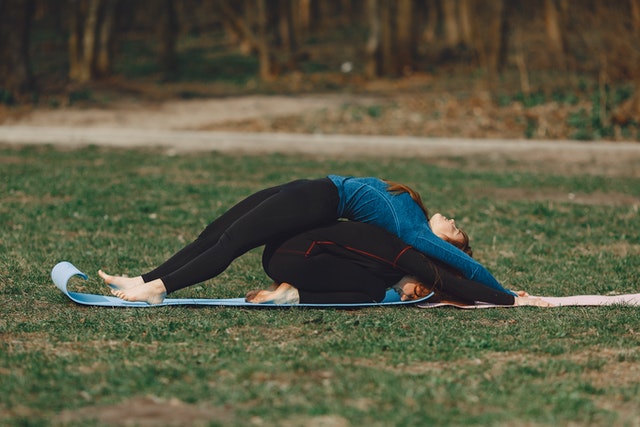
- Partner 1 should get started in Tabletop first. With your knees together or apart and your arms stretching above your head, return to Extended Child’s Pose on an exhalation.
- Sit in Dandasana (Staff Pose) with your hips at your partner’s feet, facing away from them. As you take a deep breath in, allow your back to arch and your torso to sink into Partner 1.
- In a more classic Fish Pose, you may let your shoulders drop and your arms rest by your sides. Reach your arms out to the side and let them to line up with your partner’s outstretched arms for a more challenging pose. Align your spine with your partner’s by pressing your feet into the mat, lifting your hips, and arching back even further.
- A few deep breaths or a few minutes of holding.
- Partner 1 inhale, drop your hips, focus your core, and raise your body to return to Dandasana as you inhale to exit the position. Return to the Tabletop with your partner. Replace your previous position with the one you’ve just taken.
The Boat Pose for Couples, also called Paripurna Navasana
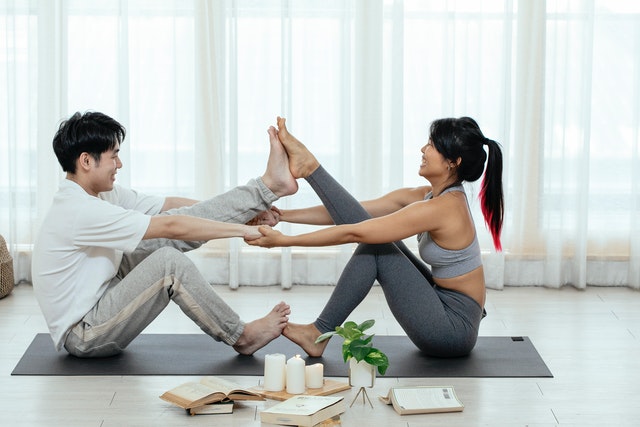
- In a sitting posture with your knees brought in toward your chest and the soles of your feet on the mat, both of you should begin the exercise facing each other. The ideal distance between you and your partner is 3 feet.
- Place your hands behind your hips on the mat. Keep your spines long and straight, and make sure your backs don’t curve, by leaning back slightly. Look for a point of equilibrium between the sacrum and the sitting bones to find.
- Lift your feet off the mat and bring your shins parallel to the mat as you exhale, keeping your back straight. Put your feet up against your partner’s and lock your ankles together.
- Maintain a wide-open heart as you lower your shoulders and extend your arms toward your partner, keeping them parallel to the mat. Take a step forward and place your hands in the hands of your companion.
- Slowly raise your legs toward the ceiling, keeping your soles pressed together as you do so. A W-shape will be formed by your two bodies.
- As you lean away from each other, maintain your lower belly engaged and your back upright.
- Breathe. Stay in the stance for 10 to 20 seconds before returning to your regular sitting position.
Virabhadrasana III (Warrior III) and Adho Mukha Svanasana (Downward Dog Pose) modification for couples
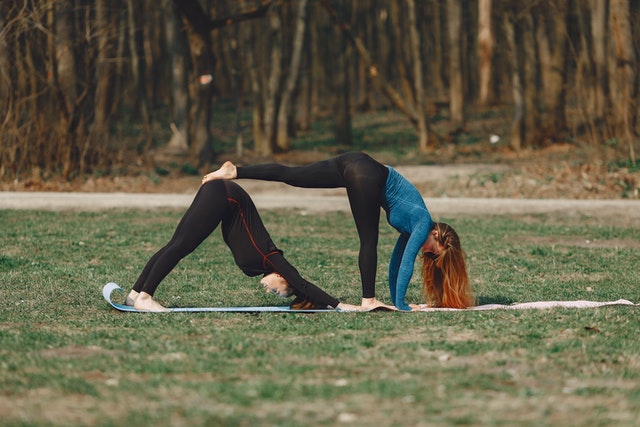
- Tadasana (Mountain Pose) begins with one partner in front of the other.
- Lie on your back with your hands on the mat in front of you as a partner 1. To enter into Downward-Facing Dog Pose, walk your hands away from your feet.
- Lift your left knee, partner 2, so that you may stand on your right leg. While leaning forward, slowly stretch your left leg straight backwards. (Watch out! Don’t kick your buddy!) Allow your partner’s glute to rest on the top of your foot.
- Partner 2 may form a straight line from your foot to the top of your head in a conventional Warrior III position. – Y. Anjali mudra may be practised with your arms either straight out at your sides, stretching out in front of you, or reaching back toward your feet. You may also lay your hands on the mat a few inches in front of your feet as an alternative.
- Keep an eye on the screen for 30–1 minute. Partner 1 descends to Tabletop or Child’s pose while Partner 2 lowers the lifted leg and returns to Tadasana.
- For the same amount of time, switch to the other leg and repeat. The postures may then be repeated with a new partner in a different position.
Pose for couples: Setu Bandha Sarvangasana (Bridge Pose) and Wind Relieving Pose
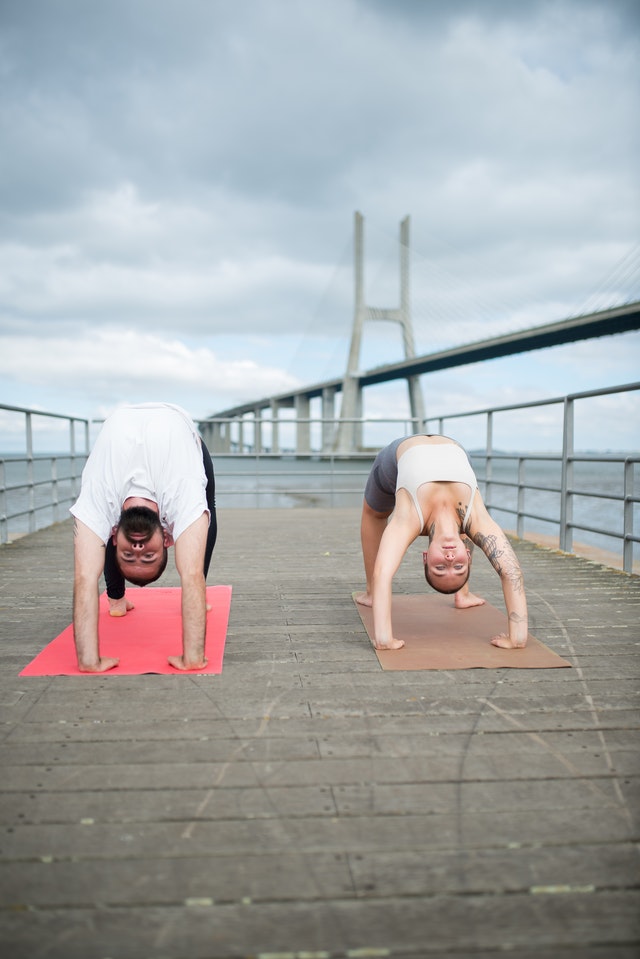
- Lay on your back with your legs straight up in Waterfall position, and your partner will do the same. Take a moment to straighten your lower body.
- Let your spouse’s hips be just a few inches from your feet while you do the same for your partner. Kneel with your feet hip-distance apart and your legs parallel to the ground.
- The first partner should squat with both feet on the floor and gently put them on the top of the knees of the second partner.
- As you elevate your hips with partner 2, exhale as you push firmly into your feet. Keep your knees in a straight line. (Keeping your partner’s feet parallel will assist you in this step.) Place your palms down on the mat or clasp your hands behind your back.
- Exhale and bring your knees closer your face while your partner elevates their hips. Make sure your neck is as long as possible. Your lower back will begin to feel better as a result.
- Keep an eye on the screen for 30–1 minute. Your hips should be parallel to the floor when you exhale, Partner 2. Your feet should be on the outside of your partner’s hips as you come on the mat as partner one.
- Allow your backs to rest in a neutral posture for a few breaths, then exchange sides with your partner.
In the Lord of the Dance Pose, partners may practise together in this pose
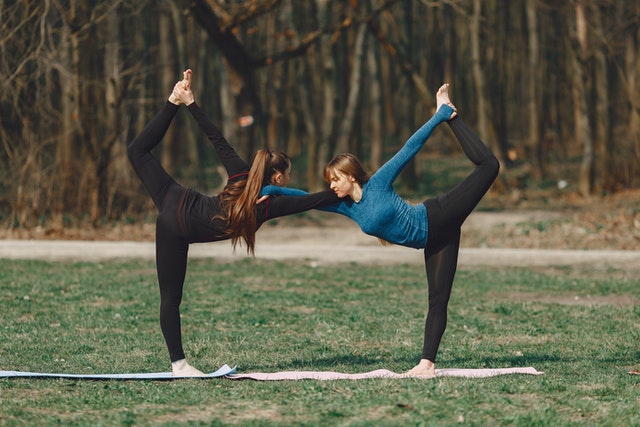
- In Tadasana (Mountain Pose), both partners face one another. You may be 3-4 feet apart, depending on your height.
- Your right arm should be placed on your partner’s right shoulder in the same way.
- You may do this by bending your left knee and bringing your left heel toward your back. Grab your ankle with your left hand and pull yourself up to standing.
- Holding on to each other, push the top of your right foot away from you with your right thigh.
- Your chests should be leaned toward one another.
- Return to Tadasana after holding for 5-10 breaths.
- Continually switch sides.
